
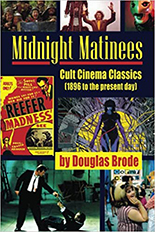 I was looking forward to reading Douglas Brode’s Midnight Matinees: Cult Cinema Classics (1896 to the Present Day so much, I didn’t realize until after reading that its main title is — like “jumbo shrimp” and “military intelligence” — a true oxymoron. Intended or not, this catchy term operates in the spirit of many of the movies featured, from absurdist to rebellious. I welcome that attitude of levity.
I was looking forward to reading Douglas Brode’s Midnight Matinees: Cult Cinema Classics (1896 to the Present Day so much, I didn’t realize until after reading that its main title is — like “jumbo shrimp” and “military intelligence” — a true oxymoron. Intended or not, this catchy term operates in the spirit of many of the movies featured, from absurdist to rebellious. I welcome that attitude of levity.
What the world doesn’t need now — or tomorrow — is yet another introduction on what makes a cult film. At least Douglas Brode frames his intro with his personal experiences growing up, so we get it from a specific POV vs. a one-size-fits-all overview. That’s one of the three things I like about the book from BearManor Media, which published his 2015 appreciation of the movies’ femme fatale, Deadlier than the Male. Before we get to the other positives, let’s get the negatives out of the way. They number a few.
As mentioned in my review of Deadlier, Brode has a chronic spelling problem with names; for example, witness “Caesar” Romero, Frank “Miler,” “Cybil” Shepherd, “Rickie” Lake and, as noted in his entry on The Cabin in the Woods, that star Chris Hemsworth soon joined the Marvel Cinematic Universe as the superhero “Thorn.”
It’s especially disheartening to see the errors spread to the headers for some of the featured films’ reviews. For example, the piece on Requiem for a Dream botches the first word as “Requium.” Meanwhile, Tangerine becomes “Tangarine” and Teaserama becomes “Teasearama.”
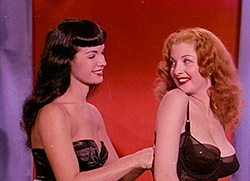 Maybe that’s why Brode chose to abbreviate titles after first mention? While not present in the two Brode books I’ve previously read, such a practice is perfectly understandable when those abbreviations are known and logical, like “ID4” or “T2” (neither of which are in Midnight Matinees, for the record). But, for example, has anyone ever referred to When Dinosaurs Ruled the Earth as “W.D.R.T.E.”? And abbreviating single-world titles is just lazy, such as “F.” for Fitzcarraldo. Not even people are immune! Just ask “S.T.” (Oh, Shirley Temple.)
Maybe that’s why Brode chose to abbreviate titles after first mention? While not present in the two Brode books I’ve previously read, such a practice is perfectly understandable when those abbreviations are known and logical, like “ID4” or “T2” (neither of which are in Midnight Matinees, for the record). But, for example, has anyone ever referred to When Dinosaurs Ruled the Earth as “W.D.R.T.E.”? And abbreviating single-world titles is just lazy, such as “F.” for Fitzcarraldo. Not even people are immune! Just ask “S.T.” (Oh, Shirley Temple.)
More baffling to me is the way each film is rated, which is to say multiple, complicated and overly specific ratings on the five-star scale. No description would better convey what I mean than just showing you. Here are his ratings for The Doors:
Val Kilmer Fan Rating: *****
Jim Morrison Fan Rating: ****
Doors (The Band) Fan Rating: ** 1/2
Oliver Stone directorial Rating: *
And for Hard Candy:
Ellen (now Elliot) Page Afficionado Rating: *****
General Cult Rating: *
In either case, I’m unsure what purpose the ratings serve. Since they’re rarely directly explained in the reviews, I started ignoring them. Or maybe I just became more distracted by several of Brode’s picks: a lot of Oscar bait. Marriage Story is a cult film? Little Miss Sunshine? Hugo? Roma? Crash? (Haggis, not Cronenberg.) Really?
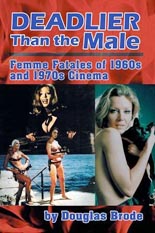 Enough complaining. Now for the rest of Midnight Matinees’ positives. As I already knew from Deadlier than the Male (as well as Brode’s Fantastic Planets, Forbidden Zones, and Lost Continents: The 100 Greatest Science-Fiction Films, not from BearManor), Brode is fun to read. Although he’s taught film at the collegiate level, his writing doesn’t reflect hallowed halls — meaning it’s neither pompous nor stodgy; in fact, it may not curry favor in the academic world, especially when it’s as zero-fucks-given as his recounting of Andy Warhol’s Bad: “Hideous looking females slowly stab adorable dogs to death and toss innocent babies from rooftops.”
Enough complaining. Now for the rest of Midnight Matinees’ positives. As I already knew from Deadlier than the Male (as well as Brode’s Fantastic Planets, Forbidden Zones, and Lost Continents: The 100 Greatest Science-Fiction Films, not from BearManor), Brode is fun to read. Although he’s taught film at the collegiate level, his writing doesn’t reflect hallowed halls — meaning it’s neither pompous nor stodgy; in fact, it may not curry favor in the academic world, especially when it’s as zero-fucks-given as his recounting of Andy Warhol’s Bad: “Hideous looking females slowly stab adorable dogs to death and toss innocent babies from rooftops.”
Speaking of Warhol, the artist’s eight-hour shot of the Empire State Building, Empire, is among the 500-plus titles chosen for inclusion. Yes, so are the usual suspects — basically almost everything on the cover — but he also tosses in the unexpected, such as the 1945 musical Ziegfeld Follies, the Spanish snuff thriller Tesis and the 1901 short What Happened on 23rd Street, New York. Those types of picks are the discoveries one hopes to get from such books. He also throws a couple of curveballs in the form of the critically reviled box-office bombs The Dark Tower and Welcome to Marwen. He may be before the curve there, but at least he’s taking a risk. —Rod Lott
Get it at Amazon or BearManor Media.


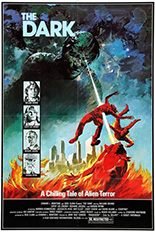
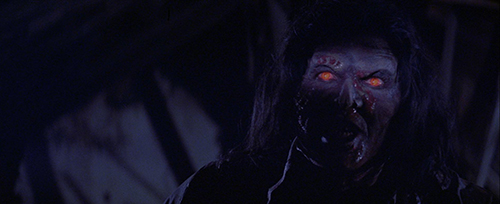

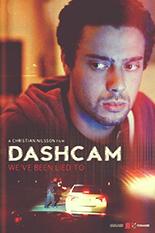
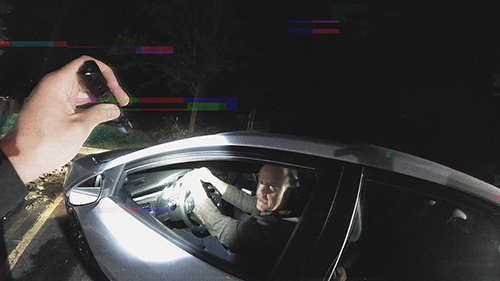
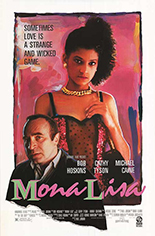
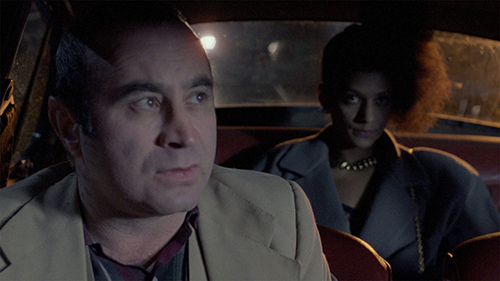

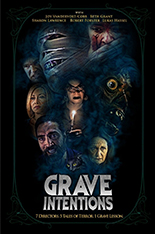 Courtesy of Death Cat Entertainment, the horror anthology Grave Intentions presents a quintet of tales hosted by voodoo retailer Magical Madam Josephine (Joy Vandervort-Cobb). Before each, she spotlights a relevant product in her shop, including charm pouches, voodoo dolls, crystals, talismans and even a candelabra prestuck with a Rainbow Coalition of candles. Josephine addresses the viewer with lines like, “Most believe bravery is a good t’ing,” “Oh, I pray this customer uses puppet magic wisely” and “Are you the hero … or the villain?”
Courtesy of Death Cat Entertainment, the horror anthology Grave Intentions presents a quintet of tales hosted by voodoo retailer Magical Madam Josephine (Joy Vandervort-Cobb). Before each, she spotlights a relevant product in her shop, including charm pouches, voodoo dolls, crystals, talismans and even a candelabra prestuck with a Rainbow Coalition of candles. Josephine addresses the viewer with lines like, “Most believe bravery is a good t’ing,” “Oh, I pray this customer uses puppet magic wisely” and “Are you the hero … or the villain?” 